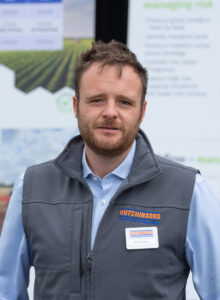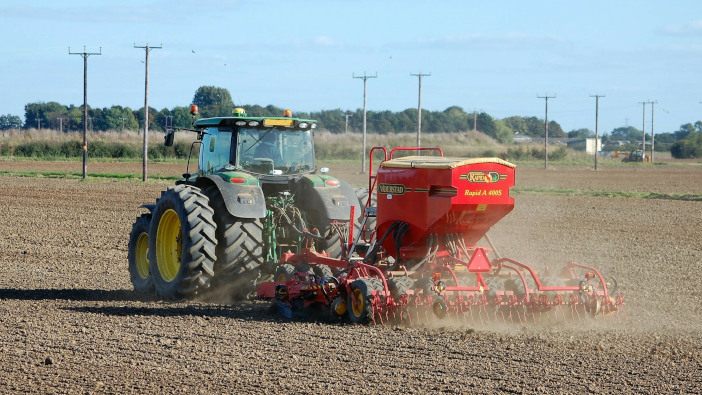Following the disruption to crop rotations caused by extreme weather, and the shift in farm support to crop measures within the Sustainable Farming Incentive (SFI), Hutchinsons is advising growers to review rotation planning.
“People often argue BPS is linked to crop production, but that’s not the case,” explains Hutchinsons farm business consultant, Will Foyle. “Providing land is in good agricultural condition, farmers receive BPS regardless of crops grown or agronomic decisions made. That never incentivised rotational change or made anybody question whether rotations were correct within the bigger picture.
“In contrast, the SFI is the first scheme this century to incentivise good husbandry and crop production and drive growers to think more about the crops they select. Ignoring this and continuing to do what you’ve always done without question is wrong.”
Dick Neale, technical manager, adds that rotational choices are too often dictated by factors beyond the farmer’s control. This may be the weather, or in the case of oilseed rape, crop failures caused by pests.
Don’t chase payments
They both acknowledge that not every farm should change its rotation and that doing so to simply chase payments would be wrong.

“Every farm is different, and what works for one might not work for another,” says Will. “The important thing is to look at the numbers carefully to see what’s working, what’s not, and build a sustainable rotation.”
He adds that some farms can grow a good range of commercial crops, including productive break crops, and that these businesses may not have to change.
However, some farms may find that the standard rotation is no longer working. This can be particularly true for predominantly cereal farms, where there are no reliable break crops for the winter wheat-led rotation.
“Growing cereals without breaks is not sustainable, so the question is, how do we get breaks into the rotation given the unreliability of oilseed rape, and uncertain profitability of legumes like peas and beans?”
Many niche crops are available, including borage, sunflowers, lupins, crambe, linseed, spring rape, soya, or grain maize, however, in UK conditions, the most reliable crops remain oilseed rape and pulses. This is especially true as there are limited chemistry options available for minority crops.
Using SFI
It is these cereal-dominated rotations where SFI options may help, explains Dick.
“Winter wheat remains the highest gross margin crop, so we need to support that, but in a different way to the perceived norm. Often that’s based on 12-month cycles of winter wheat, a break, then wheat, and maybe a second wheat if possible.”
SFI options open the door to what Dick terms the 3C Rotation, which integrates catch, cover and companion crops to boost the resilience of cereals.
“We might, for example, grow a cover crop from August to mid-January/mid-February, then a spring cereal, then a catch or summer cover crop, depending on how early the commercial crop is harvested, then a winter crop, which may also be grown with a supporting companion plant.”
Another option could be to grow successive winter, spring and summer crops to provide a 12-month break, before going back to first wheat. With this, it may be possible to retain legumes from the summer mix to act as a companion to the wheat crop.
While this may not dramatically increase gross margins over a six-year rotation, Dick notes that it will provide a lower risk break than oilseed rape or beans, as well as guaranteed quarterly income and agronomic benefits – including blackgrass control.
Head of environmental services, Georgina Wallis, warns that integrating SFI options into the rotation is complex, so must be well planned and managed to avoid creating new problems. “You can’t just put cover or companion crops in and forget about them. They are there to support productive cereals on a rotational level.
“There can be strong financial and environmental benefits, but it requires a change of attitude, a change of agronomy and a new approach. The agronomist has to be fully involved, to help guide you through the best options, where to put them and how to manage them to deliver the desired outcomes.
“Be careful with the options you choose and how you manage them.”
Gross margins
Will’s gross margin analysis illustrates how different things can be if the wrong approach is taken. In one scenario, a legume fallow under 2023 SFI options is used for two years to replace break crops (for 2024, only non-rotational legume fallows are permitted).
This is followed by first wheat, second wheat, spring barley, winter barley and back into the legume fallow.
“On paper, the payments look great, but you’re taking one-third of the farm out of production, which doesn’t work for fixed costs. In this scenario, the average gross margin across the rotation fell by £200/ha to £825/ha.”
Georgina concludes: “The SFI represents a fundamental change. Consider options carefully to decide what fits your situation long-term, understand if they are manageable, and whether payments justify the work required to succeed. Remember, you can build agreements up, so maybe try things first and add to it later.”
A 3C Rotation
- CSAM1 soil management plan- £6/ha plus £97 per agreement
- CSAM2 multi-species winter cover crop – £129/ha
- CNUM1 Nutrient management plan – £652
- CIPM1 Integrated Pest Management plan – £1129
- CIPM3 companion crops – £55/ha
- SOH1 no-till farming – £73/ha
- SOH2 Multi-species spring cover crop – £163/ha
- SOH3 Multi-species summer cover crop – £163/ha
- AHW10 Low input cereal crop – £354/ha


